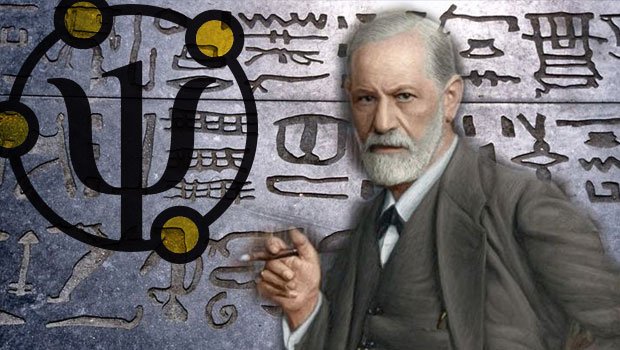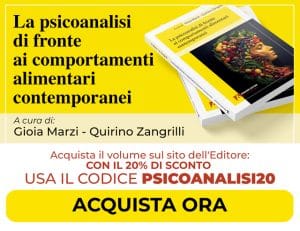The Micro-dynamics of the Transference
In the history of the psychoanalytic movement no concept has probably undergone such a complex and profound evolution as the transference. In the beginning, the transference is for Freud, only a form of displacement of the affect from one mental representation to another, and the preference for the screen constituted by the analyst is due to the fact that he represents a kind of ‘day’s residue’ always at the subject’s disposition and that this type of transference favours the resistance inasmuch as the action of making clear the repressed desire is more difficult if it must be done directly to the person concerned.
As we can see, the transference is essentially conceived as resistance tending to hide the true nature of infantile phantasies projected onto the analyst (S. Freud, Studies On Hysteria, 1893-95).
The successive development of the Freudian theory moves away from this first formulation, to deepen itself. Passing through the theorisations gathered in the work “The Dynamics Of Transference, 1912” in which the libido investment of “infantile prototypes” and “crushproof clichés” existing in the subject is explicitly mentioned for the first time, we arrive at the essentially energetic conception, illustrated in “Beyond The Pleasure Principle , 1920” in which Freud brings the transference back to that general tendency of the living matter to reconstruct, through repetition, the traumatic events, with the omnipotent aim of reaching the pre-traumatic stasis.
I briefly reported such a development since many psychoanalysts demonstrate, in their theorisations and in their clinical reports, to conform themselves to the initial Freudian formulation, probably because it is more in keeping with an omnipotent vision of the psychoanalytic enterprise. I believe that rather frequent affirmations, such as “to activate”, “to create”, “to manipulate the transference” are a sort of litmus paper of such a reductionistic vision which leads to a dangerous underestimation of the phenomenon.
If one only considers the difficulties that are normally encountered in leading the infantile nuclei which is dislocated to the present time and actualised, back to the analytic observation, for instance, in an amorous relationship with a partner, one could easily realise that nothing of which is already potential between the analyst and patient, is created inside the psychoanalytic relation. And that which is created, at least until the transferal dynamic has not been brought to the consciousness and sufficiently metabolised, is totally conditioned by the phylogenetic images which are present in the psychic ground of the two people in interaction.
As Nicola Peluffo makes clear in “Immagine e Fotografia” (1984) “The relation with the object is always internal and under the pressure of an external stimulus, one of the facets of such a relationship (affect and representation) is projected to the outside and gives an affective intonation to the situation of daily life relations (see what happens in the transference)”.
What else could Freud have intended, when in ““The Dynamics Of Transference”, he affirms: “When all the composite material in the field of the complex is suitable to be transferred to the psychoanalyst figure, such transference takes place” if not that, a homogeneity between the images activated in the psyche of the two subjects in relation is reached through the agency of chance or attempt?
In the light of these considerations we understand why Silvio Fanti insists on reaffirming the idea that “everything we indicate with the term of transference is unconscious” (this was a personal communication in 1987), in other terms, to underline that we are totally influenced by the transferral dynamics of the psychic images and that the possible conscious elaboration of such a dynamic can only be made with hindsight.
On the other hand, Jung had already summarised the essentials of these aspects in “The Psychology of the Transference” (1946): “In the act in which the patient transfers to the doctor a content activated by the unconscious, through the inductive action which is always freed in a large or small measure from the projections, even in the doctor the corresponding unconscious material is constellated. In this way the psychoanalyst and the patient find themselves in a relation founded on a common unconsciousness”.
So, the aim of the psychoanalytic work and particularly of the micropsychoanalytic one, and the actual modality with which it is realised, is that of the observation of the repetitive dynamics up to laying them bare and possibly obtaining the energetic abreaction of the nucleus originated by the trauma, which determines the psycho-material form that tends to reproduce itself in the present with modalities that are completely identical to those that it had at the moment in which the energetic accumulation took place (N. Peluffo, “La situazione”, Bollettino n° 5 ).
Until the work of the revision of the repressed is conducted on relatively recent ontogenetic vicissitudes (inherent to the phallic and anal stages) usually particular precautions are not necessary; even if, for example, for the re-activation of peculiar traumatic situations of the phallic stage, pressures towards the punishing self-castration can be determined, so powerful in order to cause self-wounding incidents which can be more or less serious. (Once and for all it would be best to remember that it is not always possible, especially in serious cases, to bind the patient to the memory and to the elaboration, rather than the acting out!).
In the moment in which such functional dynamics are re-activated they can trigger disastrous defensive mechanisms which can even endanger the subject’s life.
I would now like to widen the discussion to enter into a phylogenetic prospective; to do this I would like to describe that which I retain to be a truly symptomatic stigma that I have constantly found in psychotic or border-line patients whom I have treated. When the analysis deepens until laying bare the ontogenetic conflictual nuclei, I have noticed the apparition of the following phenomenon in the material, in a dream form or during the course of associations: the patient begins saying that he is about to verbalise the essence of the nightmare of his existence and he describes the approach of a monster, a devil which he tries in every way to maintain at a distance. “It is as if we rotate on the hinges of a door: I try to keep at a distance but then it moves closer, closer and closer, and I am overwhelmed by a never ending horror and by the desire to kill, so as to free myself. If one day I could manage to break this vicious circle I would heal forever”. (a young woman suffering from a serious paranoiac syndrome).
In this context I am not interested in interpreting the collected material, moreover in underlining the fact that I have always been stricken by this circular dynamic, by this elementary escape attempt. I would like to reassert that, systematically, the phenomenon is always described in these terms. Associatively the phenomenon brings to mind the Moro reflex which I have seen many times in the newborns that I have observed during the course of my medical experience: in response to a stimulus which can be a bang to the worktop on which the newborn is placed, this makes a start and abducts its arms widening the fingers in a fan-shape, then the newborn flexes and draws its arms back to the body with a characteristic movement of embracing, making an arched line in the air.
“…It is the Moro response, a ‘primitive’ residue of something which belongs to our distant past, a ‘reflex’ that nowadays has no utility and that, in a few weeks’ time, will disappear into the confused fog of our biological origins” (R. Restak, The Infant Mind, 1987).
I believe that the Moro reflex is the expression of an adversative defence reflex which expresses a double attempt: to move away from the stimulus and contemporarily, to close oneself in one’s own microcosmic sphere; the somatic equivalent of that unconscious desire of “the return to an annular shape which encloses in itself the cosmos” that N. Peluffo brings to light in “Micropsicoanalisi dei processi di trasformazione” (1976).
But let’s return to the psychic dynamics described which I denominate “the cyclic movement of the persecutory image”. Substantially, it is a question of re-presentation of the trauma’s image that, bear in mind, can be activated by any transferential situation which, eluding the fragile defences of the dismembered Ego of the psychotic subject, determines a traumatic penetration of the object (the psychoanalyst, the partner, the group, etc.) in the fusional maternal-foetal universe on which the psychotic subject is fixed.
From this point of view, for instance, even though if true that on a certain level of the psychosexual structuring the paranoiac position results to be a defence against the manifestation of denied homosexual pressures, on the psychic ground level the paranoiac position is the phylogenetic precipitate of the failure of transgenerational attempts of permitting the entrance of the Other into the fusional rapport. At this point it is necessary to bear in mind that the transference, as well as reactivating the infantile, uterine and phylogenetic images, also reactivates the same defence attempts, which were put into act initially.
We can hypothesise (and sometimes verify) that in the genealogical patrimony of these subjects, traumatic situations have actually happened that being able to determine the destruction of the individual, evoked defensive responses which contemplated the necessity to kill.
A response that, on the Id level, to make it clear, can be found in the mind of the normal subject every time the phylogenetic Image manifests itself with the frightening power of its silence.
Obviously, the defence mechanisms of the Ego modulate the response and elaborate it with the price of toughening-up of the iconic screens and the character structure. For the psychotic subject, who does not possess these ‘superior‘ responses, the acting out or, more frequently, the escape, the narcissistic withdrawal of the Libido from the reality and the denial, are the only possibilities. It seems, therefore, that in the psychotic subject the psychic equivalent of the Moro reflex does not disappear in order to leave space for less dramatic defensive processes.
If the micropsychoanalysis of the neurotic subject has among its fundamental aim that of making the defensive structures more elastic which enter into activity in the relation with the Image (the “work of domesticating the Statue”, of which N. Peluffo speaks about in “Immagine e fotografia”) the micropsychoanalytic work with psychotic subjects has as its first result that of making this contact with the image possible, without it determining cataclysmic phylogenetic reflexes that the environmental situation no longer tolerates.
Now, the possibility of this happening passes through the transference more in the case of the psychotic subject than in the neurotic one. In other words, the patient has the need to relive the primal situation, inserting, as lived events, the elements of novelty. Freud, with his usual efficacy writes: “… ultimately, it is impossible to destroy anyone in ‘absentia’ (absence) or in effigy”, and “The destiny of every conflict should be resolved in the transference sphere”.
To better demonstrate this dynamic I will use a brief exposition of a clinical case.
It is the case of a subject affected by a serious form of R. Spitz anaclitic depression provoked by the forced separation from, and the precocious death of his mother and partially protected by a psychotic position of denial of the loss and from a continuous, failing and painful attempt to establish a satisfying relationship with a young woman who represented every now and then, for the patient, the reincarnation of his lost mother.
In an advanced stage of the treatment, the patient attempted several times to come to terms with the denied loss, abreacting the anguish bound to the contact with the Void and finding possible forms of existence in the new situation in which the primal object was no longer present, attempts which culminated in visiting the places of his infancy, this also included the visit to the cemetery where his mother was buried.
The assistance of the analyst’s Ego, together with the reinforcing of the processes of elaboration that the young man had obtained during the long analytic work conducted until that moment, determined for the first time the insight of the event and triggered a surely lacerating and painful elaboration of the mourning, but vital.
What is interesting is that, during the interval between one session and another of this tranche, I saw the young patient present himself in my study stricken by the deepest agitation because, having once again met his beloved, he had seen her like a zombie, the walking dead who terrified him.
The phase of elaboration of the insight of his mother’s death had had the imperious necessity of transferring itself to the present in order to exhaust itself as a lived event, and only the work of abreaction of the affect dislocated to the actual persecutory situation, determined the end of the energetic investment on the maternal image favouring the detachment from it.
This is a phenomenon which, even though with a proportionally reduced intensity, demonstrates itself even in the neurotic and normal subjects. Real existential pockets are created in which the uterine-infantile energetic accumulation dislocates itself and only by pushing the patient to binding his associations to the present situation, reducing in this way the sinusoidal movement between the present and the past, it is possible to enucleate the enclosed affect in the transferral situation.
E’ autore di 74 tra libri e pubblicazioni scientifiche. Ha partecipato in qualità di relatore o di presidente di sessione a numerosi Convegni scientifici nazionali ed internazionali.
Il suo libro “La vita: involucro vuoto”, pubblicato da Borla nel 1993, è in adozione dal 1994 presso la Cattedra di Psicologia Dinamica dell’Università di Torino.
Nel 1994 gli viene assegnato il “Premio Nazionale Ciociaria per la Medicina”.
E’ l’ideatore e fondatore della rivista multimediale “Psicoanalisi e Scienza”, la più seguita rivista di psicoanalisi on line al mondo in lingua italiana (Fonte: Entireweb, Alexa, Google, Virgilio, Arianna., etc.). Nel 2012 partecipa come Relatore alla Rassegna Scientifica di BergamoScienza.
Nel 2013 espone i suoi studi sull’nterazione materno-fetale nella Sessione Speciale dell’ XI Congresso Mondiale di Medicina Perinatale a Mosca con la relazione “Intrauterine Imprinting”.
Nel 2024 riceve il Premio Accademico d’Onore della Accademia Culturale Internazionale Cartagine 2.0.
Nel 2024 docente ad Almaty – Kazakhstan presso il workshop di psicoanalisi sul tema della violenza, promosso dall’Università di psicoanalisi di Mosca in collaborazione con l’Istituto svizzero di micropsicoanalisi.
Nel 2025 pubblica come curatore il libro “LA PSICOANALISI DI FRONTE AI COMPORTAMENTI ALIMENTARI CONTEMPORANEI” presso Armando Editore
Nel 2025 pubblica il libro “PSICOANALISI DEL TRAPIANTO D’ORGANO – IL VISSUTO DELL’ALIENO” presso Armando Editore
Doctor Quirino Zangrilli was born in Fiuggi in 1955. Graduated with honours in Medicine and Surgery in 1980, he practices Psychoanalysis, with intensive method, since 1982.
He is author of 74 scientific pubblications. He has attended as speaker or president of session to many national and international scientific Conventions.
His book “La vita:involucro vuoto” (Life: empty involucre), published by Borla in 1993, has been in use by the Chair of Dynamic Psychology at Turin’s University since 1994.
He is the author and founder of the multimedia review “Psicoanalisi e Scienza” (Psychoanalysis and Science), the most read Italian on line review of psychoanalysis.
In 2012 he participated as a Speaker at the Scientific Festival of BergamoScienza.
In 2013 he illustrated his research on the maternal-fetal interaction in the Special Session of the XI World Congress of Perinatal Medicine in Moscow with his relation “Intrauterine Imprinting”.
He is visiting teacher at Moscow Institute of psychoanalysis and training psychoanalist of Swiss Institute of Micropsychoanalysis.
In 2024 he is a teacher in Almaty – Kazakhstan at the psychoanalysis workshop on the topic of violence, promoted by the Moscow University of Psychoanalysis in collaboration with the Swiss Institute of Micropsychoanalysis.
In 2024 he received the Honorary Academic Award of the Carthage 2.0 International Cultural Academy
In 2025 he published as an editor the book “PSYCHOANALYSIS IN THE FACE OF CONTEMPORARY EATING BEHAVIOURS” at Armando Editore
In 2025 he published the book “PSYCHOANALYSIS OF ORGAN TRANSPLANTATION – THE EXPERIENCE OF THE ALIEN” at Armando Editore
Le Le Docteur Quirino Zangrilli est né à Fiuggi en 1955. Diplômé avec mention en Médecine et Chirurgie en 1980, il pratique la psychanalyse depuis 1982, en utilisant une technique intensive.
Il est l’auteur de 74 livres et publications scientifiques.
Il a participé en tant que conférencier ou président de session à de nombreuses conférences scientifiques nationales et internationales.
Son livre “La vie : enveloppe vide”, publié par Borla en 1993, est adopté depuis 1994 par la Chaire de Psychologie Dynamique de l’Université de Turin. En 1994, il a reçu le “Prix national Ciociaria de médecine”.
Il a conçu et fondé le magazine multimédia “Psicoanalisi e Scienza”, qui est le magazine de psychanalyse en ligne en italien le plus suivi au monde. (Source : Entireweb, Alexa, Google, Virgilio, Arianna., etc.).
En 2012, il a participé en tant que conférencier à la colloque scientifique de BergamoScienza.
En 2013, il a exposé ses études sur l’interaction materno-fœtale lors de la session spéciale du XIe Congrès mondial de médecine périnatale à Moscou avec le rapport “Intrauterine Imprinting”. Il est chargé d’enseignement au cours de spécialisation de trois ans en psychanalyse, psychothérapie psychanalytique et consultation psychanalytique à l’Université de Moscou.
Il est membre didacticien de l’Institut Suisse de Micropsychanalyse et de la Commission pour la Pratique de celui-ci.
En 2024, il enseigne à Almaty – Kazakhstan à l’atelier de psychanalyse sur le thème de la violence, promu par l’Université de Psychanalyse de Moscou en collaboration avec l’Institut Suisse de Micropsychanalyse.
En 2024, il reçoit le Prix Académique Honoraire de l’Académie Culturelle Internationale Carthage 2.0.
En 2025, il publie en tant qu’éditeur le livre « LA PSYCHANALYSE FACE AUX COMPORTEMENTS ALIMENTAIRES CONTEMPORAINS » chez Armando Editore
En 2025, il publie le livre « PSYCHANALYSE DE LA TRANSPLANTATION D’ORGANES – L’EXPÉRIENCE DE L’ÉTRANGER » avec Armando Editore
В 2024 году является преподавателем в Алматы – Казахстан на семинаре по психоанализу на тему насилия, проводимом Московским университетом психоанализа в сотрудничестве со Швейцарским институтом микропсихоанализа.
В 2024 был награжден Почетной академической премией Академии Международной Культуры «Карфаген 2.0».
В 2025 году он опубликовал в качестве редактора книгу «ПСИХОАНАЛИЗ В РАМКАХ СОВРЕМЕННОГО ПИЩЕВОГО ПОВЕДЕНИЯ» в издательстве Armando Editore
В 2025 году он опубликовал книгу «ПСИХОАНАЛИЗ ТРАНСПЛАНТАЦИИ ОРГАНОВ – ОПЫТ ЧУЖОГО» совместно с Армандо Эдиторе



















